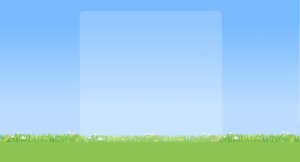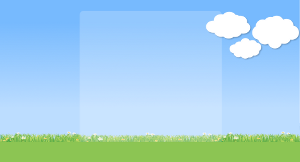Vertically align an asterisk on a line
- Category: Cascading Stylesheets
- Hits: 28679
So I have an unordered list of values (*, 1, 2, 3...) and for styling reasons I want the asterisk to be the same size as the numbers but not overlap any list item beneath it. By increasing the size of the asterisk, this often increases the line-height and causes the overall line height to change for other objects in the same row. The problem afterwards was that the asterisk character would overlap the item beneath it (in this case #2) so when a user clicked on #2 they would in fact be clicking on the item containing the asterisk above it.
Objective
| Box List Before: | Box List After |
|
|
How?
CSS keeping the footer at the bottom
- Category: Cascading Stylesheets
- Hits: 26641
Aim:
| Header | |
Left | Right |
| Footer | |
<div id="container">
<div id="header"></div>
<div id="content">
<div id="left"></div>
<div id="right"></div>
<div class="push"></div>
</div>
<div id="footer"></div>
</div>
SituationThe header displayed fine. The left and right columns finally got them side by side. But the footer that has a background image was under the left and right columns... The main content layer was overlapping the footer. I tried various z-index's bearing in mind that the footer has to be behind because the main content had a semi-transparent layer that overlapped it half-way.
I managed to fix this by including a div push layer which clears both (even though i had clear:both on the css for my #right div layer). For some reason, it has a more forceful effect in its own separate layer.
CSS Fieldset
- Category: Cascading Stylesheets
- Hits: 9170
fieldset label.inline { display: inline-block; margin-left: 2em; }
Change color of fieldset grouping line
fieldset { border: 2px ridge #7abcff; }
CSS Background Without Causing Scrollbars
- Category: Cascading Stylesheets
- Hits: 24966
A Client had some clouds on the background of his photoshop file for his website. They were to be positioned in the top right corner with the leftmost tip aligned to the right of a central content section. I separated off the clouds as another div layer, specified the width and height and specified it's left. It caused the horizontal scrollbar which is a bit annoying because you scroll to the right and theres nothing but some background image. Also the footer was at 100% so it got cut off if you scrolled horizontally.
Aim / Objective
To have a background of sky and grass with a centered content section (white semi-transparent layer) of 900 pixels width as shown in the following picture:

And I want the clouds as another layer ontop aligned to the top right:

SITS: XET format for Export not available
- Category: Extensible Markup Language
- Hits: 11608
Trying to export a STU record but I want to use the XET template I created rather than the pre-installed XML export formats. When I try to export using data format XET, the system has never heard of it.
Why?
To test the XET I created, I want to see what the resulting XML will look like so that my post-staging phase can be developed as it will know what the data and label fields look like.
How?
SITS: Export field code and name
- Category: Extensible Markup Language
- Hits: 29386
- Microsoft Windows 7 Enterprise
- SITS:Vision Students (v8.7.0)
You might be able to work it out from the online manuals but it took me a while, we wanted to bring back both the code and the lookup value in our XML to our Staging environment.
Why?
Let's take the country of birth of a person as an example as it is expected to be a long list and where just using the parameter &S is not workable. Instead I want to use &G[] and get both the code and the lookup value:
-- What I have: no export format <stu_codc>5826</stu_codc> -- What I could have: export format set to get lookup value -- &GCOD_NAME.COD.SRS <stu_codc>England</stu_codc> -- What I want: export format to get multiple values -- &G[COD.SRS:•<•<COD_CODE.COD•>•>|•<•<COD_NAME.COD•>•>] <stu_codc>5826|England</stu_codc>
How?
A quick run through of setting up an export process in SITS
- Category: Extensible Markup Language
- Hits: 47318
- SITS:Vision v8.7.0
- Uniface v9.6.03
- Microsoft Windows 7
- Microsoft SQL Server 2012 (SP1) - 11.0.3128.0
What?
"Quick" may not be the right word, so this is a somewhat summarized article on how to get data out of SITS, up to running the monitors and populating an OUTPUT table in the SITS database. Note that this does not include steps thereafter in the Staging or Target destination which will be specific to your business requirements.
Why?
If you're developing in SITS, and you use the client, the first time(s) you do this, the task is rather daunting. Having done it a few times and run through a few, I thought I'd note this down to remind me if I ever work for a company using SITS:Vision again.
How?
XML Schema Reference
- Category: Extensible Markup Language
- Hits: 30583
| Element | Explanation |
|---|---|
| all | Specifies that the child elements can appear in any order. Each child element can occur 0 or 1 time |
| annotation | Specifies the top-level element for schema comments |
| any | Enables the author to extend the XML document with elements not specified by the schema |
| anyAttribute | Enables the author to extend the XML document with attributes not specified by the schema |
| appinfo | Specifies information to be used by the application (must go inside annotation) |
| attribute | Defines an attribute |
| attributeGroup | Defines an attribute group to be used in complex type definitions |
| choice | Allows only one of the elements contained in the |
| complexContent | Defines extensions or restrictions on a complex type that contains mixed content or elements only |
| complexType | Defines a complex type element |
| documentation | Defines text comments in a schema (must go inside annotation) |
| element | Defines an element |
| extension | Extends an existing simpleType or complexType element |
| field | Specifies an XPath expression that specifies the value used to define an identity constraint |
| group | Defines a group of elements to be used in complex type definitions |
| import | Adds multiple schemas with different target namespace to a document |
| include | Adds multiple schemas with the same target namespace to a document |
| key | Specifies an attribute or element value as a key (unique, non-nullable, and always present) within the containing element in an instance document |
| keyref | Specifies that an attribute or element value correspond to those of the specified key or unique element |
| list | Defines a simple type element as a list of values |
| notation | Describes the format of non-XML data within an XML document |
| redefine | Redefines simple and complex types, groups, and attribute groups from an external schema |
| restriction | Defines restrictions on a simpleType, simpleContent, or a complexContent |
| schema | Defines the root element of a schema |
| selector | Specifies an XPath expression that selects a set of elements for an identity constraint |
| sequence | Specifies that the child elements must appear in a sequence. Each child element can occur from 0 to any number of times |
| simpleContent | Contains extensions or restrictions on a text-only complex type or on a simple type as content and contains no elements |
| simpleType | Defines a simple type and specifies the constraints and information about the values of attributes or text-only elements |
| union | Defines a simple type as a collection (union) of values from specified simple data types |
| unique | Defines that an element or an attribute value must be unique within the scope |
XSD Restrictions/Facets for Datatypes
| Constraint | Description |
|---|---|
| enumeration | Defines a list of acceptable values |
| fractionDigits | Specifies the maximum number of decimal places allowed. Must be equal to or greater than zero |
| length | Specifies the exact number of characters or list items allowed. Must be equal to or greater than zero |
| maxExclusive | Specifies the upper bounds for numeric values (the value must be less than this value) |
| maxInclusive | Specifies the upper bounds for numeric values (the value must be less than or equal to this value) |
| maxLength | Specifies the maximum number of characters or list items allowed. Must be equal to or greater than zero |
| minExclusive | Specifies the lower bounds for numeric values (the value must be greater than this value) |
| minInclusive | Specifies the lower bounds for numeric values (the value must be greater than or equal to this value) |
| minLength | Specifies the minimum number of characters or list items allowed. Must be equal to or greater than zero |
| pattern | Defines the exact sequence of characters that are acceptable |
| totalDigits | Specifies the maximum number of digits allowed. Must be greater than zero |
| whiteSpace | Specifies how white space (line feeds, tabs, spaces, and carriage returns) is handled |
Page 4 of 9
Credit where Credit is Due:
Feel free to copy, redistribute and share this information. All that we ask is that you attribute credit and possibly even a link back to this website as it really helps in our search engine rankings.
Disclaimer: Please note that the information provided on this website is intended for informational purposes only and does not represent a warranty. The opinions expressed are those of the author only. We recommend testing any solutions in a development environment before implementing them in production. The articles are based on our good faith efforts and were current at the time of writing, reflecting our practical experience in a commercial setting.
Thank you for visiting and, as always, we hope this website was of some use to you!
Kind Regards,
Joel Lipman
www.joellipman.com
Latest Articles
Accreditation



Donate & Support
If you like my content, and would like to support this sharing site, feel free to donate using a method below:

 bc1qf6elrdxc968h0k673l2djc9wrpazhqtxw8qqp4
bc1qf6elrdxc968h0k673l2djc9wrpazhqtxw8qqp4
 0xb038962F3809b425D661EF5D22294Cf45E02FebF
0xb038962F3809b425D661EF5D22294Cf45E02FebF
Paypal:

Bitcoin:
 bc1qf6elrdxc968h0k673l2djc9wrpazhqtxw8qqp4
bc1qf6elrdxc968h0k673l2djc9wrpazhqtxw8qqp4
Ethereum:
 0xb038962F3809b425D661EF5D22294Cf45E02FebF
0xb038962F3809b425D661EF5D22294Cf45E02FebF






